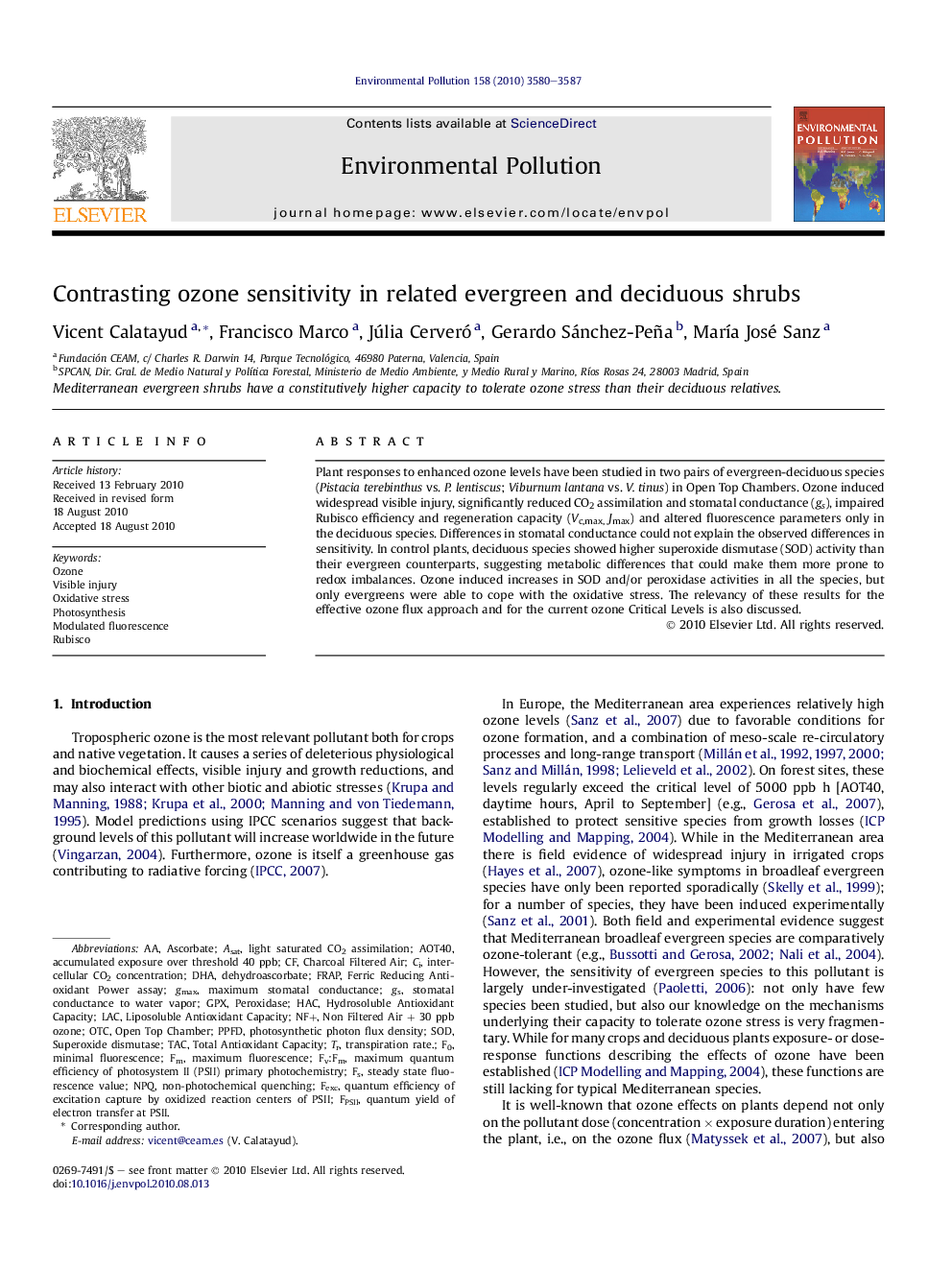| Article ID | Journal | Published Year | Pages | File Type |
|---|---|---|---|---|
| 4425743 | Environmental Pollution | 2010 | 8 Pages |
Abstract
Plant responses to enhanced ozone levels have been studied in two pairs of evergreen-deciduous species (Pistacia terebinthus vs. P. lentiscus; Viburnum lantana vs. V. tinus) in Open Top Chambers. Ozone induced widespread visible injury, significantly reduced CO2 assimilation and stomatal conductance (gs), impaired Rubisco efficiency and regeneration capacity (Vc,max,Jmax) and altered fluorescence parameters only in the deciduous species. Differences in stomatal conductance could not explain the observed differences in sensitivity. In control plants, deciduous species showed higher superoxide dismutase (SOD) activity than their evergreen counterparts, suggesting metabolic differences that could make them more prone to redox imbalances. Ozone induced increases in SOD and/or peroxidase activities in all the species, but only evergreens were able to cope with the oxidative stress. The relevancy of these results for the effective ozone flux approach and for the current ozone Critical Levels is also discussed.
Keywords
PPFDFerric reducing antioxidant power assayNPQGmaxdehydroascorbateAOT40TACOTCFRAPGPXRuBisCOLACAscorbateVisible injuryOpen top chamberAsatOzoneHACOxidative stressmaximum fluorescenceNon-photochemical quenchingDHAstomatal conductance to water vaporSODSuperoxide dismutaseTotal antioxidant capacityintercellular CO2 concentrationPhotosynthesisphotosynthetic photon flux densityminimal fluorescencetranspiration ratePeroxidase
Related Topics
Life Sciences
Environmental Science
Environmental Chemistry
Authors
Vicent Calatayud, Francisco Marco, Júlia Cerveró, Gerardo Sánchez-Peña, MarÃa José Sanz,
